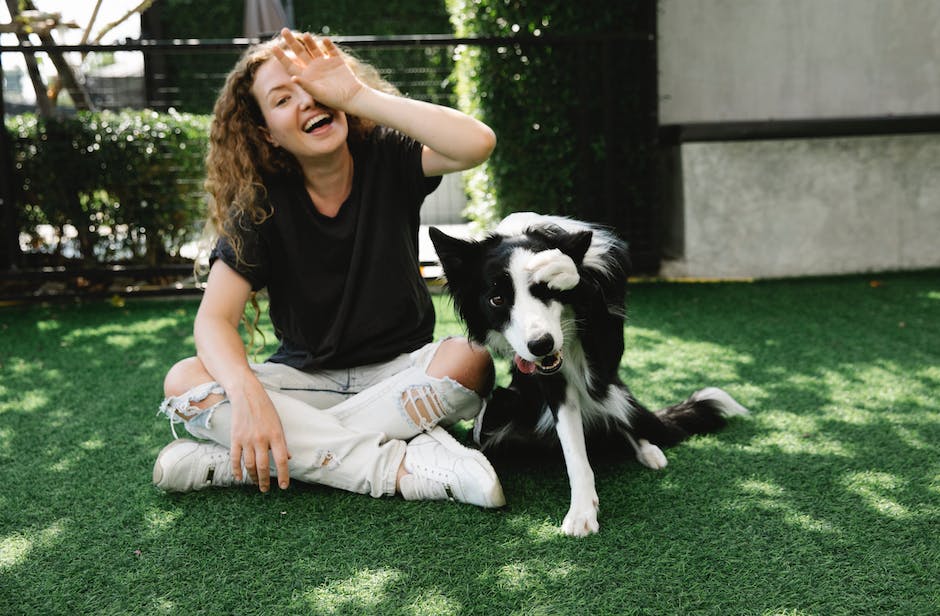As pet owners, we all want our furry friends to have the freedom to explore and play, but sometimes that freedom can lead to trouble. Whether it’s jumping on guests or running out the door, it’s important to establish boundaries for your pet’s safety and the safety of others. Teaching your pet to respect limits may seem daunting, but with a little patience and consistency, it can be a rewarding experience for both you and your furry companion. In this article, we’ll explore some boundary basics to help you establish clear limits for your pet and keep them happy and healthy.
1. Setting Boundaries: A Crucial Step in Pet Training
Training your pet is an essential part of being a responsible pet owner. One of the most important aspects of pet training is setting boundaries. Boundaries help your pet understand what is acceptable behavior and what is not. Without boundaries, your pet may become confused and anxious, which can lead to destructive behavior and even aggression. Here are some tips for setting boundaries with your pet:
- Be consistent: Consistency is key when it comes to setting boundaries. Make sure everyone in your household is on the same page and enforcing the same rules.
- Start early: It’s much easier to establish boundaries when your pet is young. If you adopt an older pet, it may take longer to establish boundaries, but it’s still important to do so.
- Use positive reinforcement: Instead of punishing your pet for bad behavior, reward them for good behavior. This will help them understand what is expected of them.
Remember, setting boundaries is not about being strict or controlling. It’s about creating a safe and happy environment for both you and your pet. By setting clear boundaries, you can help your pet become a well-behaved and happy member of your family.
2. Teaching Your Furry Friend to Respect Limits: Tips and Tricks
Teaching your furry friend to respect limits can be a challenging task, but it is essential for their safety and well-being. Here are some tips and tricks to help you establish boundaries with your pet.
Firstly, consistency is key. Make sure everyone in your household is on the same page when it comes to rules and boundaries. This will prevent confusion for your pet and ensure that they understand what is expected of them. Secondly, use positive reinforcement to encourage good behavior. Reward your pet with treats, praise, and affection when they follow the rules. This will motivate them to continue behaving well. Lastly, be patient and persistent. It may take some time for your pet to learn and respect the limits, but with consistent training, they will eventually get the hang of it.
In addition to these tips, there are some tricks you can use to help your pet understand the boundaries. For example, use visual cues such as tape or markers to indicate where your pet is allowed to go. You can also use verbal cues such as “no” or “stop” to discourage unwanted behavior. Another trick is to redirect your pet’s attention to a more appropriate activity when they are breaking the rules. For instance, if your pet is chewing on furniture, give them a chew toy instead. By using these tricks, you can help your pet understand the limits and avoid unwanted behavior.
3. From Indoor Spaces to Outdoor Areas: Navigating Boundaries with Your Pet
Pets are an essential part of our lives, and we want them to be happy and healthy. However, navigating boundaries with pets can be challenging, especially when it comes to transitioning from indoor spaces to outdoor areas. Here are some tips to help you and your furry friend navigate these boundaries with ease.
Firstly, it’s essential to establish clear boundaries for your pet. This could include creating a designated area for your pet to play in the yard or setting rules for where they can and cannot go. Use positive reinforcement to encourage good behavior and discourage bad behavior. Additionally, make sure your pet is trained to come when called, so you can quickly bring them back inside if needed. Finally, ensure your pet is wearing identification tags and is microchipped in case they wander off. By setting clear boundaries and training your pet, you can ensure they stay safe and happy when transitioning from indoor to outdoor spaces.
Secondly, it’s crucial to provide your pet with the necessary tools to enjoy outdoor spaces. This could include providing them with a comfortable bed or blanket to lay on, plenty of water to drink, and toys to play with. Additionally, make sure your pet is protected from the elements by providing shade on hot days and shelter on rainy or cold days. Finally, ensure your pet is protected from pests and parasites by using flea and tick prevention and keeping them up to date on their vaccinations. By providing your pet with the necessary tools, you can ensure they are comfortable and happy when enjoying outdoor spaces.
In conclusion, navigating boundaries with your pet can be challenging, but by setting clear boundaries, training your pet, and providing them with the necessary tools, you can ensure they stay safe and happy when transitioning from indoor to outdoor spaces. In conclusion, setting boundaries for your pet is an essential aspect of responsible pet ownership. By teaching your furry friend to respect limits, you are not only ensuring their safety but also strengthening the bond between you and your pet. Remember, consistency and patience are key when it comes to boundary training. With time and effort, your pet will learn to understand and respect the rules you have set in place. So, go ahead and start implementing these boundary basics today and watch your pet thrive in a safe and happy environment.

